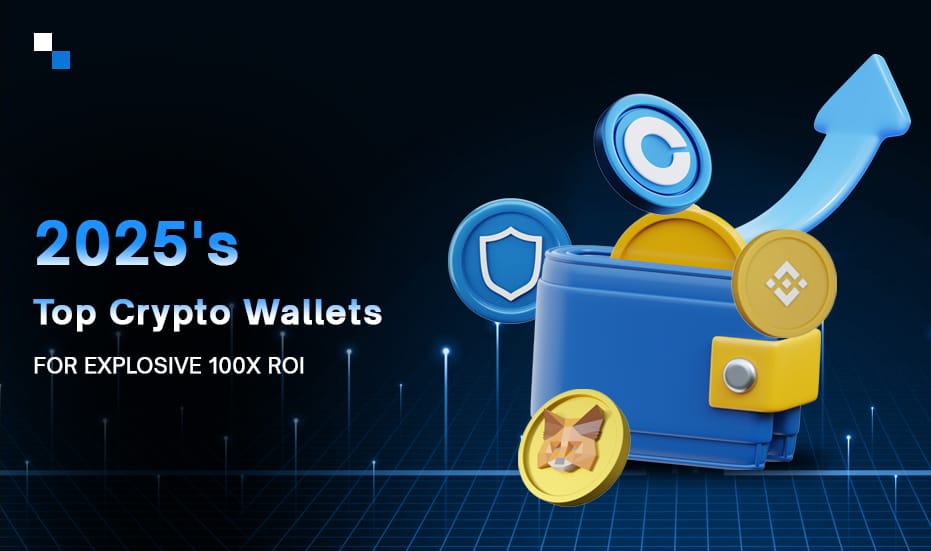
How to Leverage Cryptocurrency Volatility
April 3, 2020
Why should you integrate Two-Factor Authentication into your Crypto Exchange?
April 6, 2020Is it possible to have virtual currency in this digital age?
Yes, it is. Virtual currencies have been made a reality with the introduction of cryptocurrencies. Bitcoin, ethereum, litecoin are some of the major cryptocurrencies that are revolutionizing the traditional means of transactions. We have currencies which cannot be seen, cannot be touched, but are very much present.
These digital currencies are stored in a cryptocurrency wallet, thus the security of a crypto wallet is paramount. So, if you are considering building your crypto wallet, make sure it is secure and easy-to-use because a complicated wallet might be difficult for your users to understand and they may mistakenly perform irreversible transactions.
Let us delve into some of the crucial steps required to create your own bitcoin wallet app to efficiently store your crypto assets.
How to create a bitcoin wallet app
Bitcoin wallet app is a software structure that allows you to send, receive, and store cryptocurrencies. Follow the below-mentioned pointers to easily build up a feature-rich crypto wallet.
1. Complete understanding of blockchain
The first and foremost step for any enthusiast looking to build a crypto wallet is to have a deep understanding of blockchain technology. As cryptocurrency is backed by blockchain technology, you should know how it works. Blockchain is made up of two words that are block and chain. “Block” signifies digital information or transaction data and “chain” signifies the connection of blocks in a cryptographic mechanism. It is fully decentralized and no central authority controls the transactions.
Thus cryptocurrency wallets also carry the same benefits of immutability, transparency, and privacy of transactions.
2. Working of cryptocurrency wallet
Now, after having an understanding of blockchain and cryptocurrency, we move forward to know how this mechanism works.
Cryptocurrency wallets are based on asymmetric cryptographic keys that are private keys and public keys. In case when a crypto user sends a particular amount of cryptocurrencies from one wallet address to another, then he/she transfers the ownership of those assets to the receiver. Then this particular transaction of sending and receiving gets stored on the blockchain and can never be altered.
For instance, Ruby wants to buy a garment from a store that accepts bitcoin as a means of payment. For this, what she needs is the seller’s public address and her own private key. Now, to initiate the transaction, Ruby simply needs to sign in to the wallet through her phone, provided it is a mobile wallet, or with any other required device. Further, she would require inputting the public address of the seller and proceed with the payment. Afterward, the transaction would be sent to miners for validation and to add it as a block in the series of blockchain. Hence, the payment process is completed and Ruby will get her garment.
3. Types of cryptocurrency wallets
There are broadly two categories of cryptocurrency wallets, which are classified as below:
- Hot Storage Wallet
Hot wallets are the ones that are always connected to the internet. These wallets are most convenient to use because you can easily send and receive cryptocurrencies without any hassle. Hot wallets are generally preferred by those who indulge in regular crypto trading activities. These are relatively easier to use, but at the same time also vulnerable to hacking.
Desktop wallets, web wallets and mobile wallets are the major forms of hot wallets.
- Cold Storage Wallet
A cold storage wallet is a wallet that is not connected to the internet. This wallet can be connected to the internet as the need arises and then the crypto user can proceed with his transaction. These wallets are generally more secure and safer to store crypto assets compared to hot wallets. These can be further classified as hardware wallets and paper wallets.
4. Features to be integrated
As many crypto wallets are coming into the market and the world is fast moving into the digital ecosystem, thus you require a feature-rich wallet to launch into the market. If you are also planning to create your own bitcoin wallet app, then integrating the following features can help you gain a competitive edge:
- Mnemonic passphrase
- Two-factor authentication
- Biometric authentication
- Robust infrastructure
- Multi-signature support
- QR code scanner
- NFC (Near Field Communication) support
- User-friendly interface
- Linking to any crypto exchange
- Scalable architecture
5. Technology stack
After knowing all the measures what all is required to create a bitcoin wallet. Now, we must proceed further to build up a technical team that would create a cryptocurrency wallet.
If you are considering building a web crypto wallet, then you may use Angular JS along with HTML and for the backend, you can use Node JS.
Further, for iOS, you may choose swift for front end and Python for the backend.
Lastly, for the android app, Java for frontend can be considered and Node JS/ Python for the backend.
However, if you feel like you do not have the required technical expertise to build a crypto wallet then you can always seek expert guidance.
Antier Solutions is a leading crypto wallet development company that has the knowledge, experience, and expertise to build a cryptocurrency wallet.
We can help you launch a multi-currency white label crypto wallet in just 3 weeks. On the contrary, our blockchain developers can build a custom crypto wallet for you, from ground zero, as per your business needs.
Schedule a free demo of our white label crypto wallet or connect with our subject matter experts to share your business needs.



